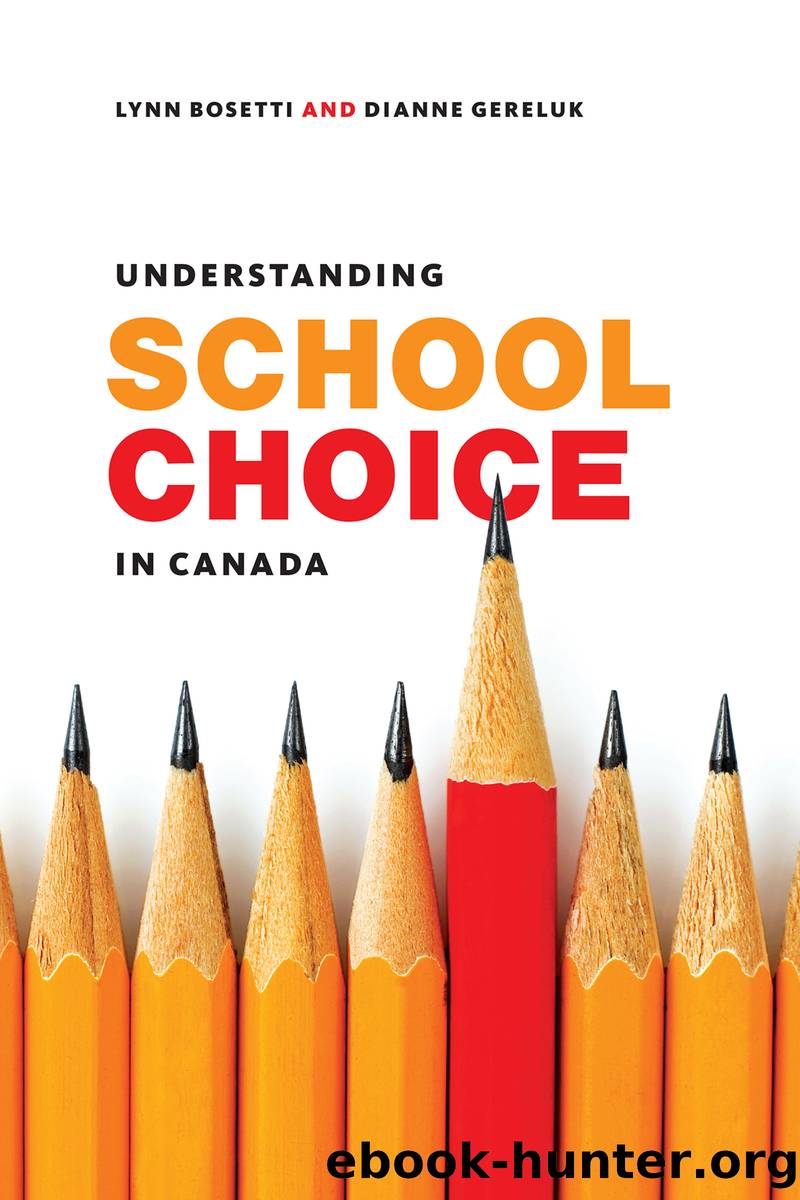Understanding School Choice in Canada by Lynn Bosetti

Author:Lynn Bosetti
Language: eng
Format: epub
ISBN: 978-1-4426-9541-2
Publisher: University of Toronto Press
Published: 2016-06-28T00:00:00+00:00
More than 40 years ago the Edmonton Public School Board created a revolutionary open boundary system that allowed parents and students to pursue educational programming in a learning environment of their choice (Edmonton Public School Board, 1974). Since choice is the foundation of the school districtâs approach to education, it has devoted considerable resources to guiding parents through the decision-making process of finding and choosing an appropriate school. It has developed an online Find a School toolkit that includes a quick guide to planning a childâs education, a district map of schools and listings, open house events, and school websites with demographic information on the student population, student achievement results on provincial exams, transportation costs, budget, and extracurricular activities. The Edmonton Public School Board, like other school boards in Canada, has developed alternative programs to provide choice to parents and to accommodate the particular learning needs, preferences, and aptitudes of children with the aim of enhanced student achievement and success.
While provisions for alternative programs have been embraced by some school districts in Canada, this form of school choice is not without its critics. Many of the criticisms centre on issues of equity and whether alternative programs ensure fair admission policies, as well as adequate information and support for parents to make informed decisions about the options available to them. Critics argue that provisions for alternative schools often fail to ensure that lower-income families and hard-to-educate students are provided the necessary support to engage in educational choice that would lead to equitable and fair access to programs and schools. There are also issues related to fair access in terms of the extra transportation costs often associated with having children attend alternative schools. Some critics fear that these schools could lead to the segregation of students along ability, socio-economic, religious, or ethnic lines. These critics hold to the belief that the common school ideal, where the vast majority of students attend a standard public school designated by their neighbourhood, can best accommodate the educational needs of individuals and the greater society.
Download
This site does not store any files on its server. We only index and link to content provided by other sites. Please contact the content providers to delete copyright contents if any and email us, we'll remove relevant links or contents immediately.
Spell It Out by David Crystal(35342)
Life for Me Ain't Been No Crystal Stair by Susan Sheehan(35144)
Cecilia; Or, Memoirs of an Heiress — Volume 1 by Fanny Burney(31320)
Cecilia; Or, Memoirs of an Heiress — Volume 3 by Fanny Burney(30927)
Cecilia; Or, Memoirs of an Heiress — Volume 2 by Fanny Burney(30884)
Professional Troublemaker by Luvvie Ajayi Jones(28960)
The Great Music City by Andrea Baker(21137)
We're Going to Need More Wine by Gabrielle Union(18062)
Twilight of the Idols With the Antichrist and Ecce Homo by Friedrich Nietzsche(17701)
The Secret History by Donna Tartt(16605)
Cat's cradle by Kurt Vonnegut(13851)
Bombshells: Glamour Girls of a Lifetime by Sullivan Steve(13098)
Pimp by Iceberg Slim(12920)
All the Missing Girls by Megan Miranda(12737)
Fifty Shades Freed by E L James(12442)
Norse Mythology by Gaiman Neil(11869)
Talking to Strangers by Malcolm Gladwell(11852)
The Social Justice Warrior Handbook by Lisa De Pasquale(11485)
Underground: A Human History of the Worlds Beneath Our Feet by Will Hunt(11247)
